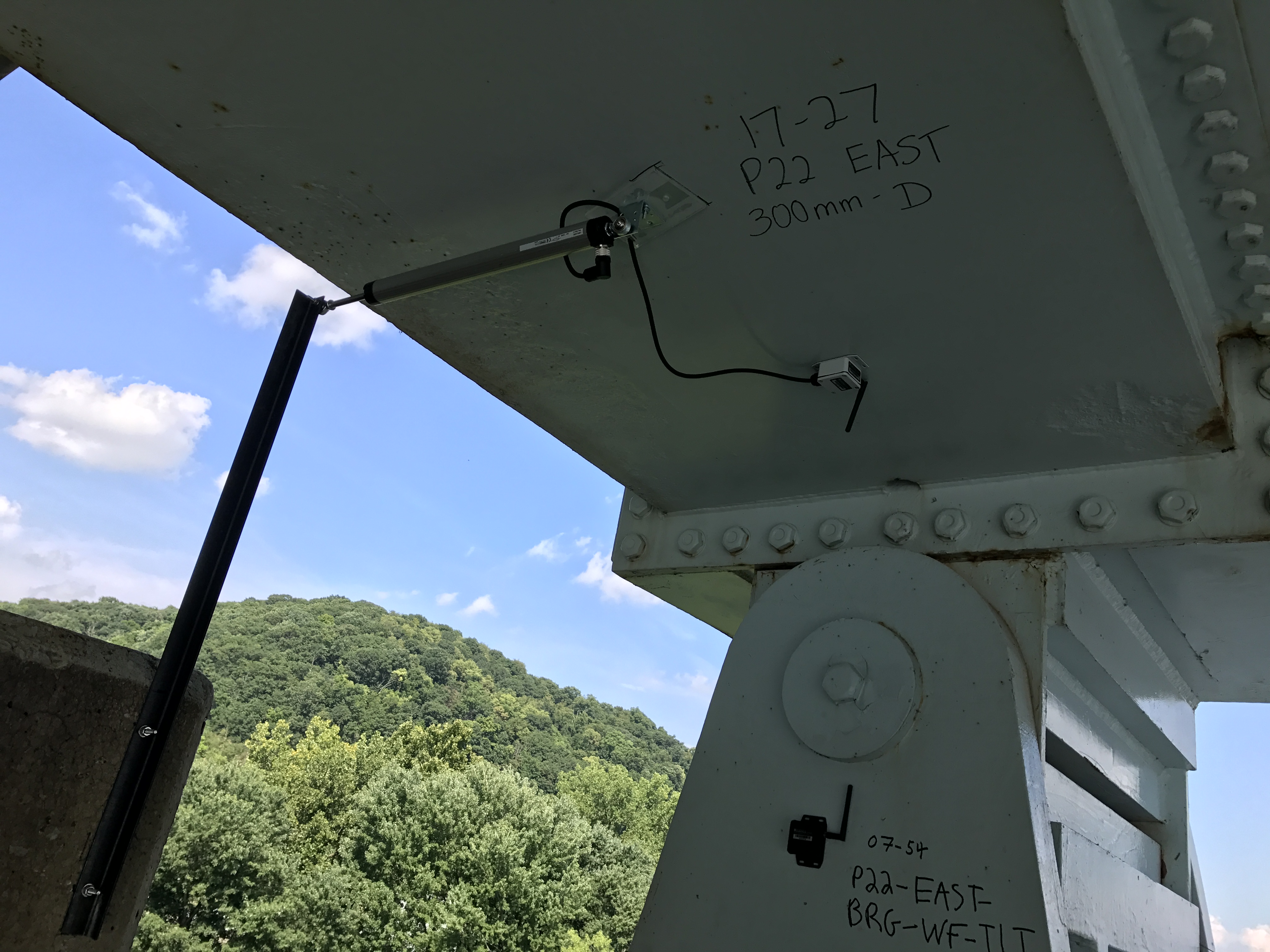
Bridge Expansion Joint Monitoring
Bridge expansion joint assessment
- Aging bridge with expansion joints showing signs of seal deterioration and water infiltration
- New bridge construction requiring baseline joint movement measurements
- Bridge in freeze-thaw climate zone needing monitoring for ice expansion effects
Request a rapid assessment
Share project details and timelines. Our engineering leads respond within one business day with mobilization options and PE-reviewed scope.
Bridge expansion joints accommodate thermal expansion, contraction, and seismic movement in bridge structures, but these critical components require continuous monitoring to prevent water infiltration, corrosion, and structural damage. Nationwide bridge infrastructure faces varying climate conditions that create different expansion demands, from freeze-thaw cycles in northern states to thermal expansion in southern regions. Joint failure can lead to deck deterioration, bearing damage, and safety hazards for motorists.
Expansion joints are subjected to heavy traffic loading, de-icing chemicals, and environmental exposure that accelerate wear and create maintenance challenges. Conventional inspection methods often miss developing issues between scheduled maintenance visits, allowing small joint movements to cascade into major structural problems. Modern bridges with longer spans and complex geometries require sophisticated monitoring to ensure joint performance under dynamic loading conditions.
We provide comprehensive expansion joint monitoring using displacement sensors, tilt meters, and strain gauges that capture real-time joint movement and condition. Our nationwide deployment ensures consistent monitoring standards across different bridge types and environmental conditions, with automated alerts that notify engineers of any joint movement exceeding acceptable thresholds.
What We Include
- Displacement sensors installed at joint interfaces to measure opening and closing movements
- Tilt meters to monitor joint rotation and angular displacement
- Strain gauges on joint components to detect developing stresses
- Temperature sensors to correlate movement with thermal expansion
- Accelerometers for vibration monitoring during traffic loading
- Weather stations to account for environmental effects on joint performance
- Real-time data transmission and cloud-based monitoring platform
- Automated threshold alerts for any movement exceeding design limits
Common Situations We Handle
- Aging bridge with expansion joints showing signs of seal deterioration and water infiltration
- New bridge construction requiring baseline joint movement measurements
- Bridge in freeze-thaw climate zone needing monitoring for ice expansion effects
Frequently Asked Questions
How does expansion joint monitoring work for bridges nationwide
Bridge expansion joints across the United States require monitoring due to varying climate conditions and traffic loads. Our nationwide deployment uses standardized sensors and protocols to ensure consistent assessment of joint performance regardless of bridge location or design.
What are the most common expansion joint problems
Joint seal failure, bearing plate corrosion, anchor bolt loosening, and excessive movement from thermal expansion are the most frequent issues we monitor. Traffic loading and environmental exposure accelerate these problems in aging bridge infrastructure.
How do you monitor expansion joints without disrupting traffic
We use wireless sensors installed during off-peak hours or planned maintenance windows. The sensors transmit data remotely, eliminating the need for ongoing physical access while providing continuous monitoring of joint performance.
What happens when expansion joint monitoring detects movement issues
Our alert system immediately notifies bridge engineers with specific movement details. We provide data to support decisions about traffic restrictions, emergency repairs, or scheduled maintenance to prevent further deterioration.
How often should expansion joints be monitored
Continuous monitoring provides the most comprehensive assessment, but we also offer periodic monitoring campaigns. The frequency depends on bridge age, traffic volume, and environmental conditions, with nationwide standards ensuring consistent evaluation criteria.
Example of Our Capabilities
Service Type
Bridge Expansion Joint Monitoring
Scope
Comprehensive monitoring of expansion joint movement and condition on highway bridge
Client Situation
Bridge owner needs to monitor expansion joint performance on aging structure carrying interstate traffic
Our Approach
Deploy wireless displacement and tilt sensors at joint locations, establish baseline measurements, and set threshold alerts for excessive movement
Expected Outcome
Real-time monitoring dashboard showing joint movement trends, automated notifications for any displacement exceeding 0.25 inches, and quarterly performance reports
Contact us to discuss your bridge expansion joint monitoring needs nationwide. We can share references upon request.
